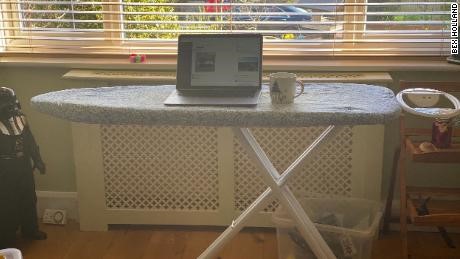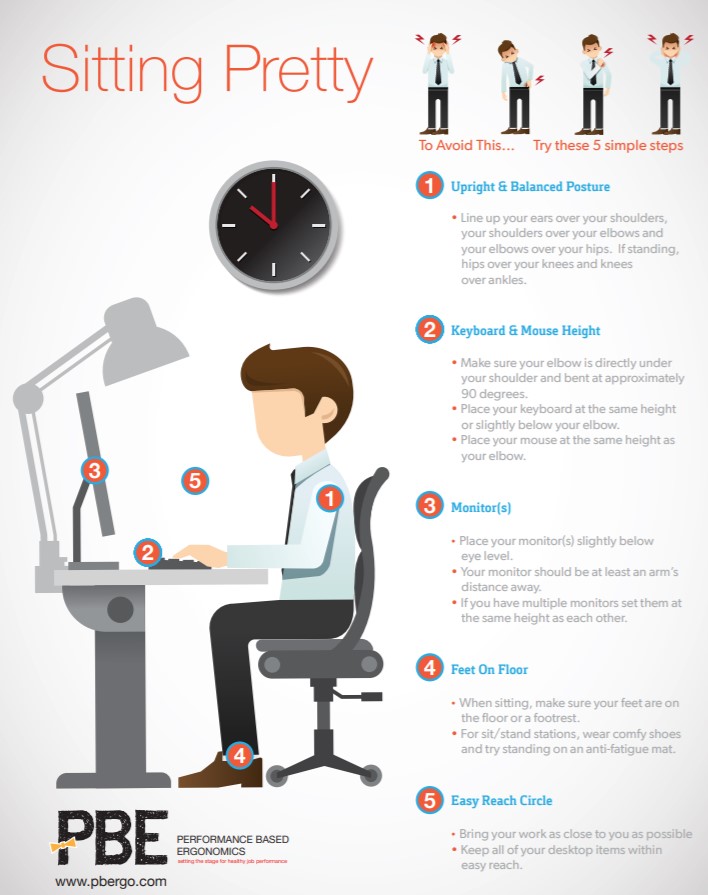The quick spread of COVID-19 and shelter-in-place mandates have forced the majority of employees to transition from an office setting to a fully remote working environment. For many, this transition has not exactly been seamless, especially for those without the proper workspace set-ups to support their various ergonomic needs (which is many of us!).
To help discuss some of these challenges, Sequoia partnered with PBergo to host a webinar called, “Working from Home: Ensuring a Smooth Transition.” While the full webinar can be accessed here, here’s a recap of some of the key session takeaways:
People Weren’t Necessarily Prepared for This…
Does the below image conjure up a laugh – or is it all too relatable? CNN recently published an article on how employees are attempting to adapt to working at home, showing images of employees setting up laptops on ironing boards, bar carts, desk hampers, and even in bathtubs. During the webinar we took a quick poll, and found that this scenario resonated with many of the viewers: 39% of the webinar attendees indicated working in a “makeshift work area”, and 17% indicated they are “just roaming around the house looking for a quiet place to take a call.”

Scheduling “Movement” is Going to Be More Important Than Ever
In an office setting, most of us don’t realize how often we are moving around. At Sequoia, I find myself floating between several conference rooms, phone booths, and my desk throughout the day – and that’s not including trips down the hall to our kitchen, restroom, and up and down the stairs between floors. While working remote, many of us find ourselves not moving more than a few hundred feet throughout the day, as virtual meeting rooms eliminate the need to move. On our webinar, we discussed the importance of not just taking breaks throughout the day, but intentionally putting these movement breaks on your calendar. Map out your day to find the times you need to sit and be focused, which meetings you can take walking or standing up, and carve out a few minutes between meetings to take much needed stretch breaks.
Creative Ways to Make Use of “Home Essentials” to Better Support You
With shipping delays on many staple office items like desk chairs, monitors, and keyboards, you might find yourself strapped for high-quality ergonomic supplies. Don’t fret – there are plenty of great resources to help you out! Whether you’re sitting at a desk, kitchen table, or other “homey” surface, here are some tips and resources shared by PBergo:
When sitting at a desk or table find the healthy way to do it:
- Knees = Level with or slightly lower than your hips
- Feet = On the floor or footrest (foot rest can be books or a folded towel)
- Back = Supported by chair or small couch pillow
- Posture = Upright and balanced

For additional tips like using an ironing board as a standing desk, easy stretches you can do at home, and other helpful advice, check out the full webinar here, as well as the following resources:
- PBergo’s resources site: includes stretches and a video on WFH Tips & Tricks!
- Sequoia’s COVID-19 page: covers various topics from ergonomics to mental health, including parenting tips, virtual workouts, and more!
Kaleana Quibell – Kaleana is the Wellbeing Director for Sequoia, helping advise clients on strategies to support employees’ Physical, Emotional, and Financial wellbeing. In her free time, Kaleana enjoys yoga, the outdoors, and spending time with her family and puppy.




